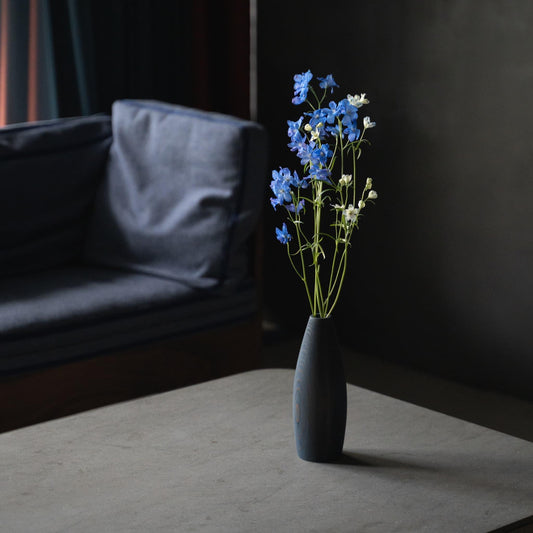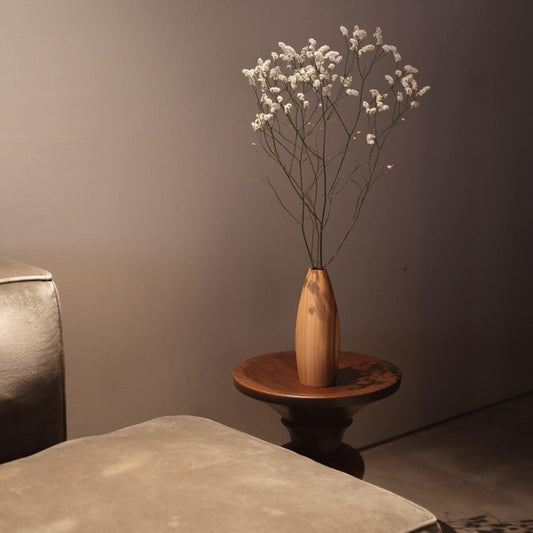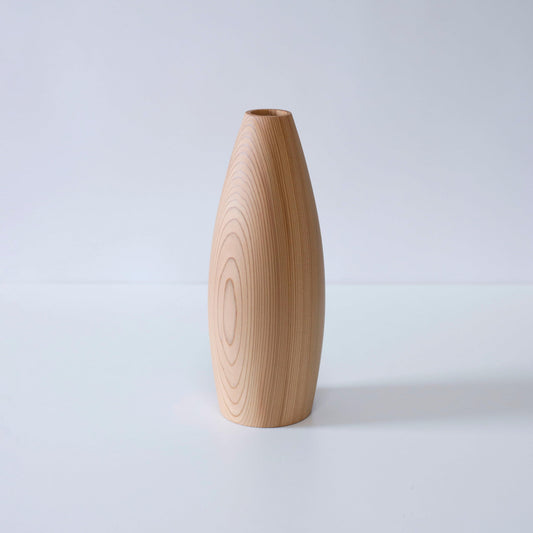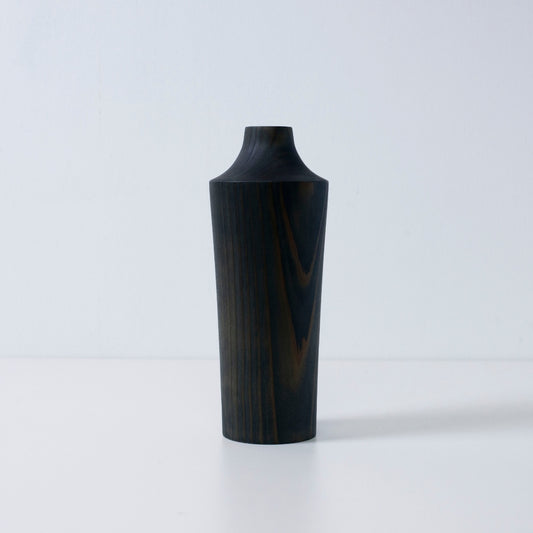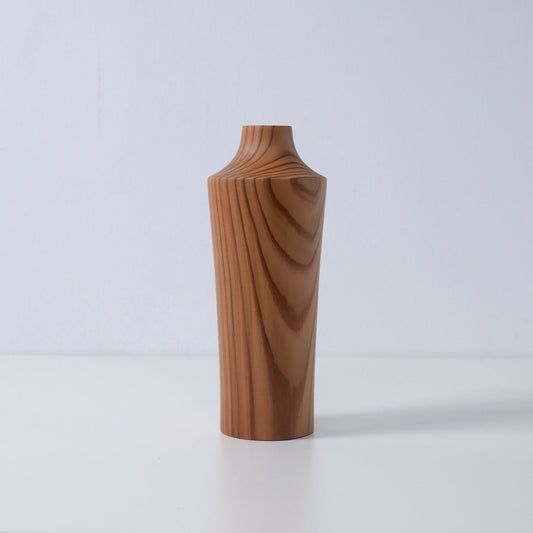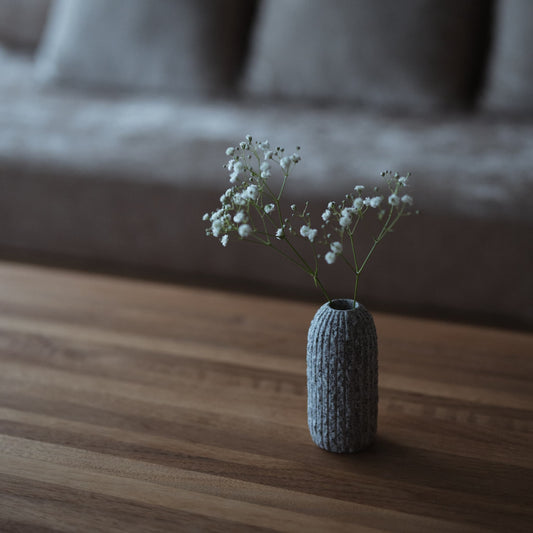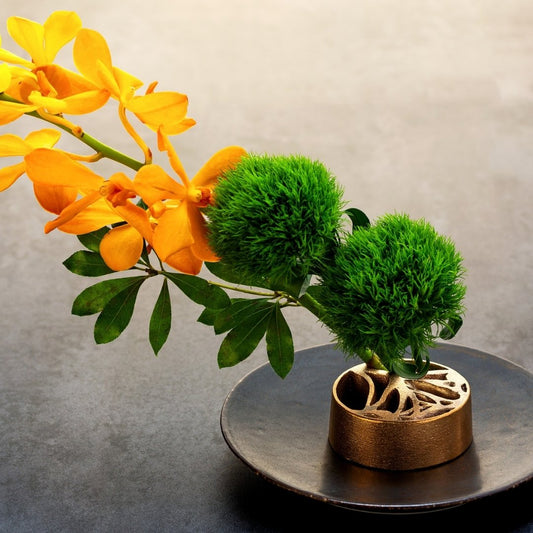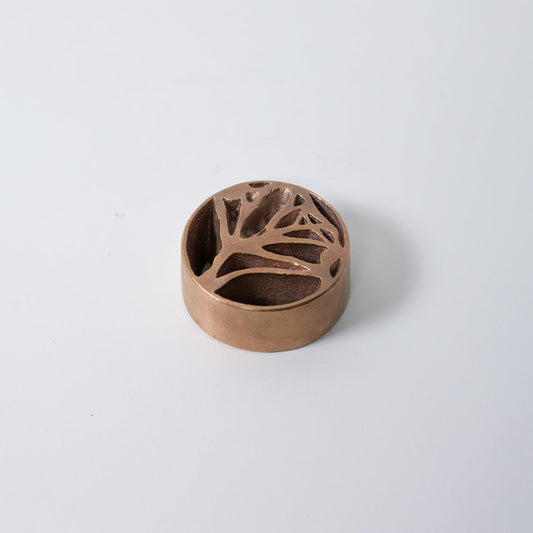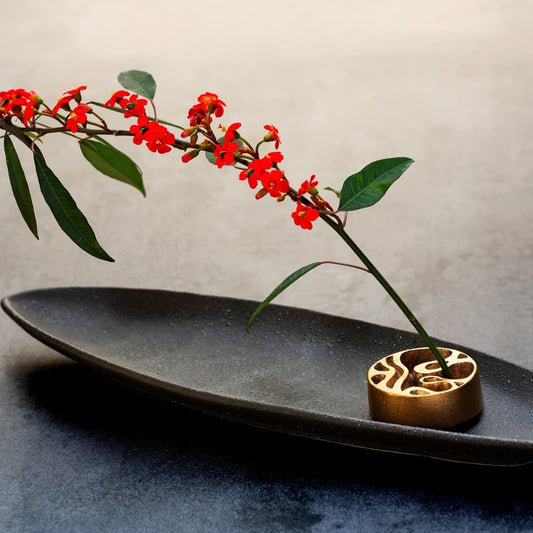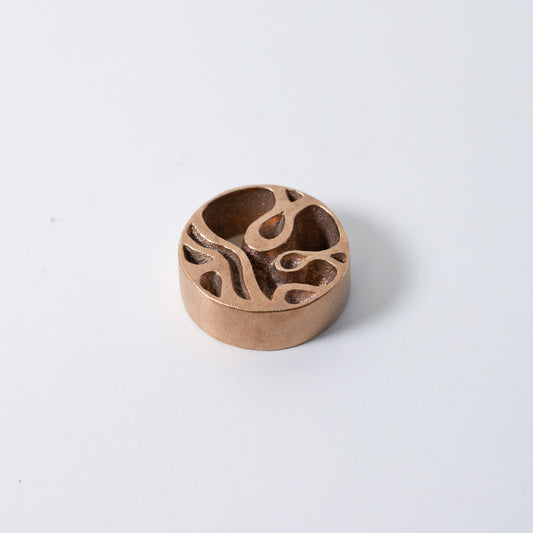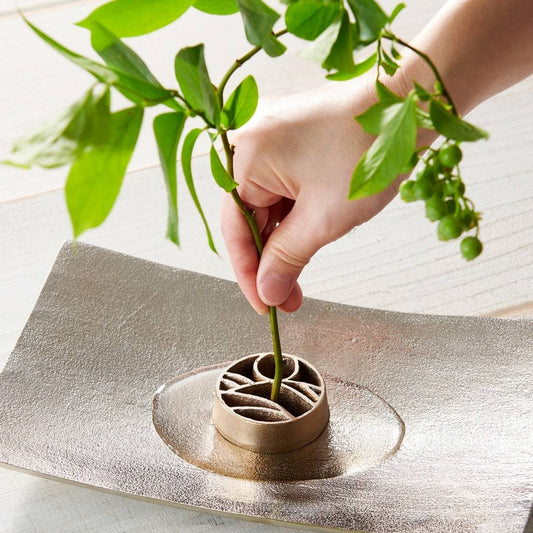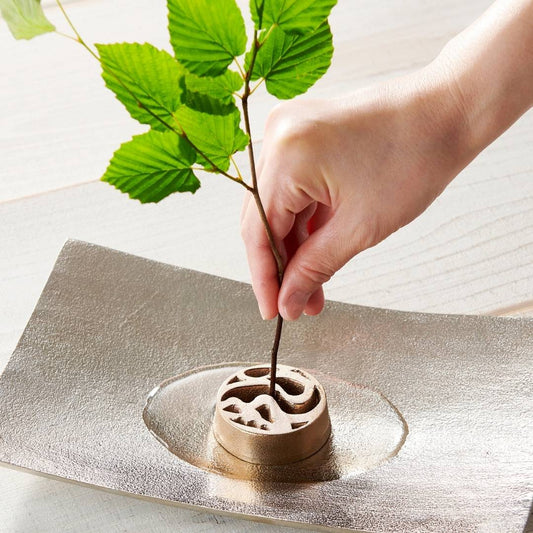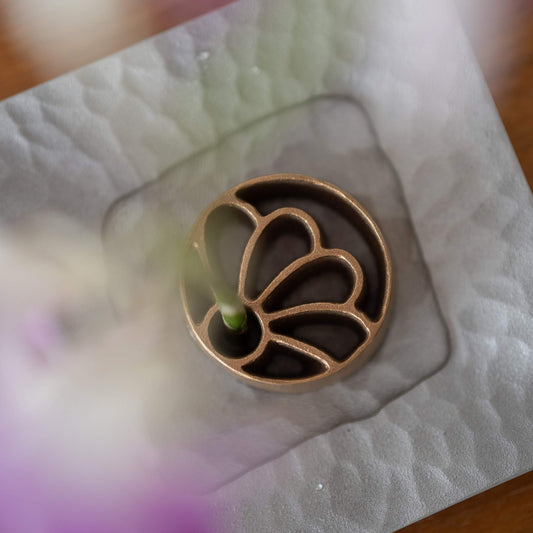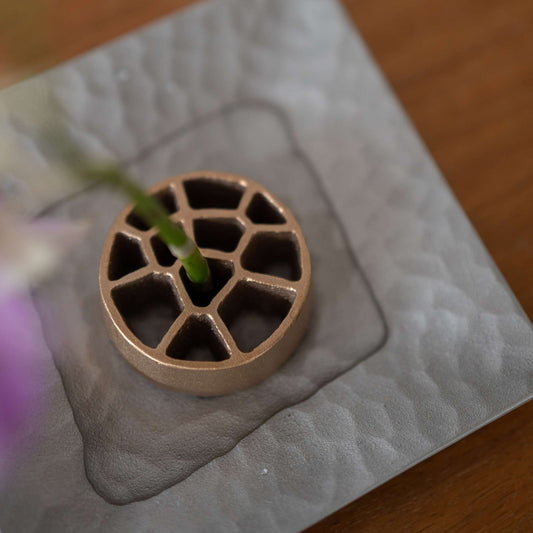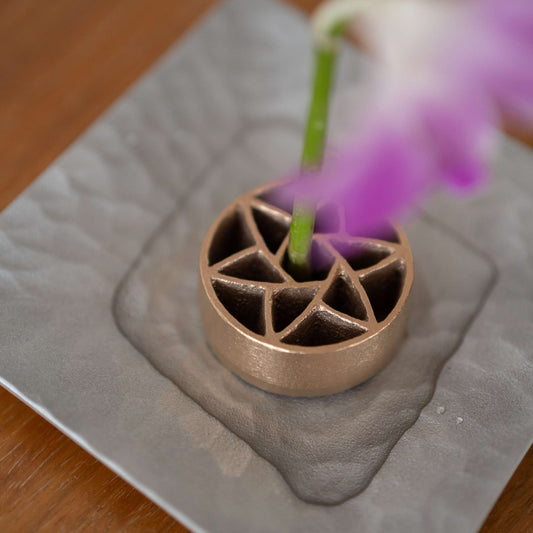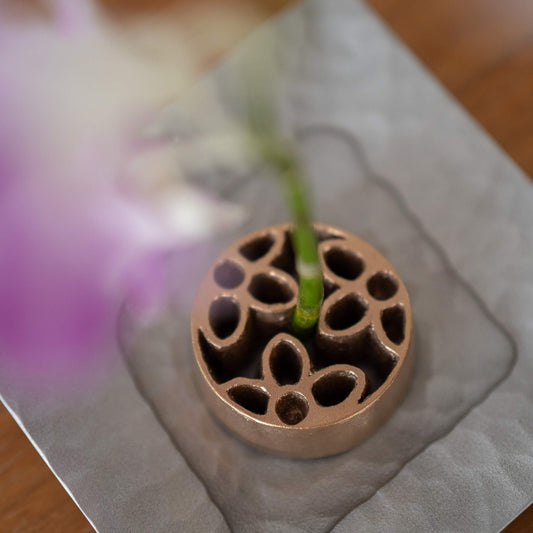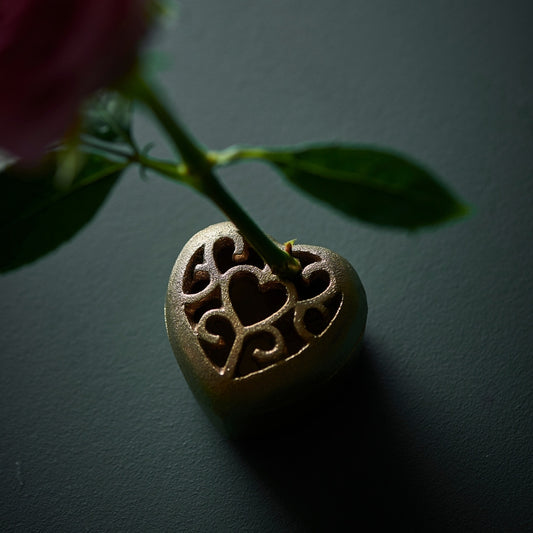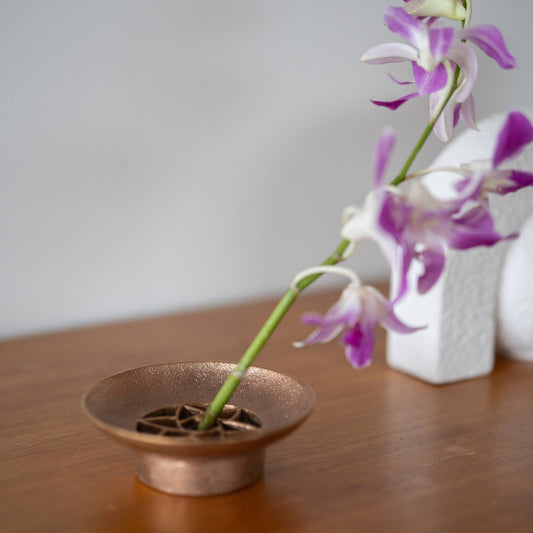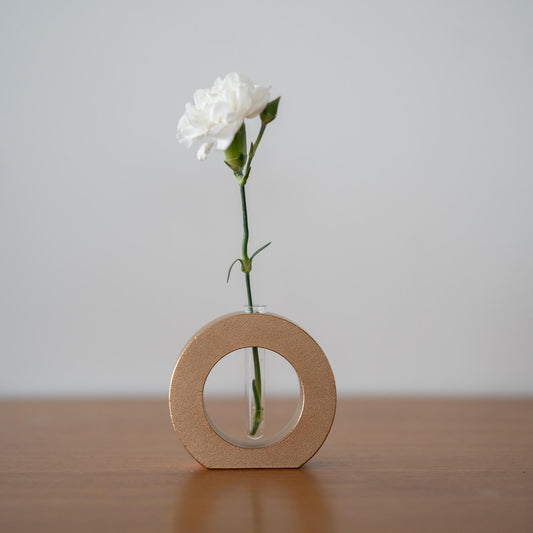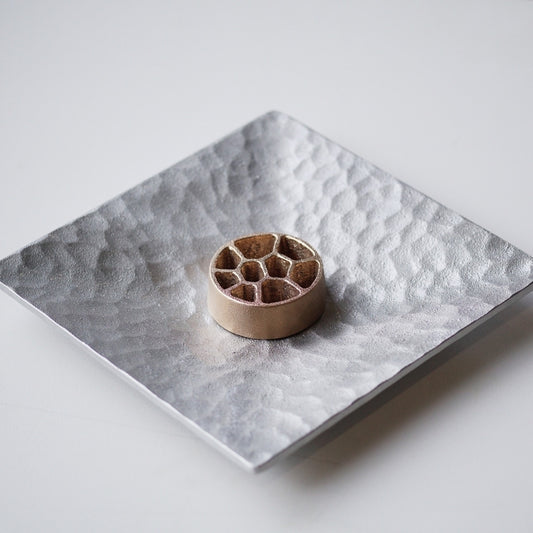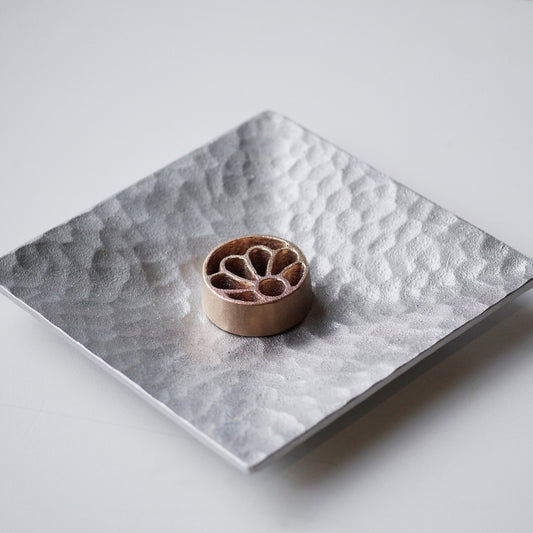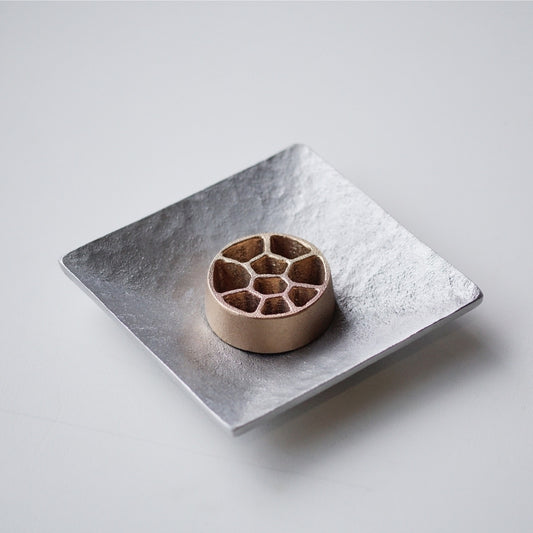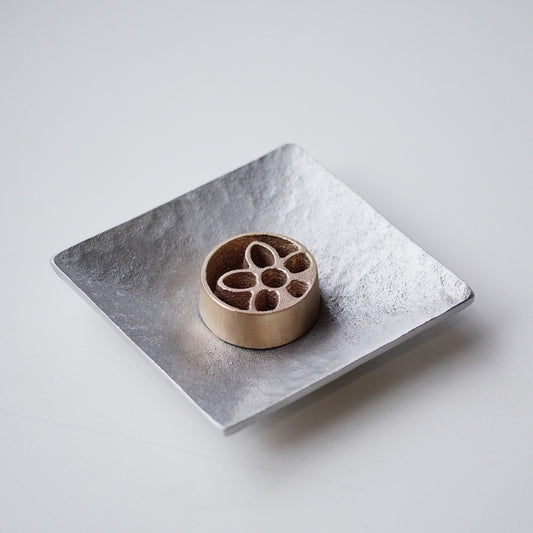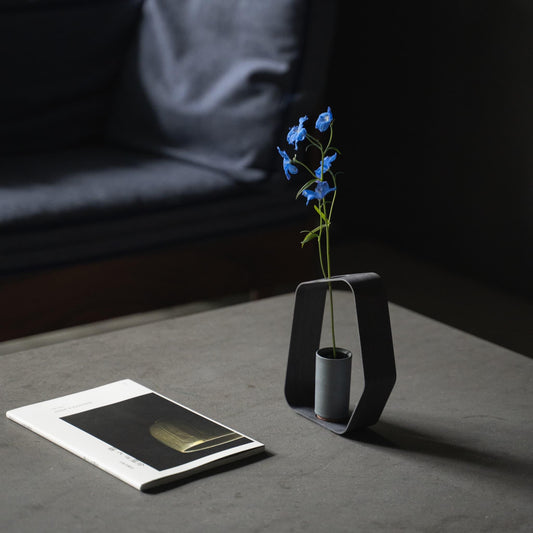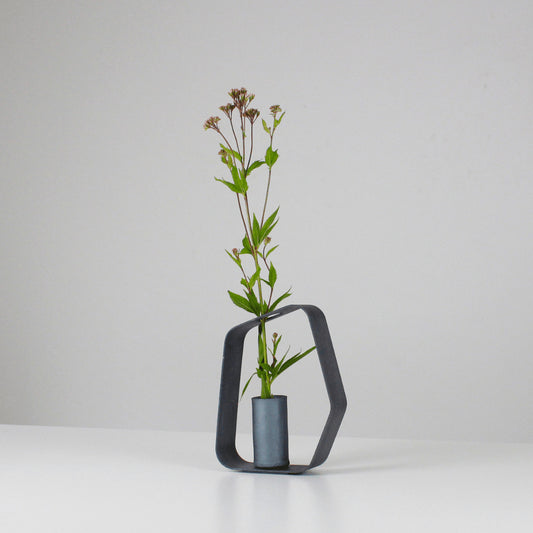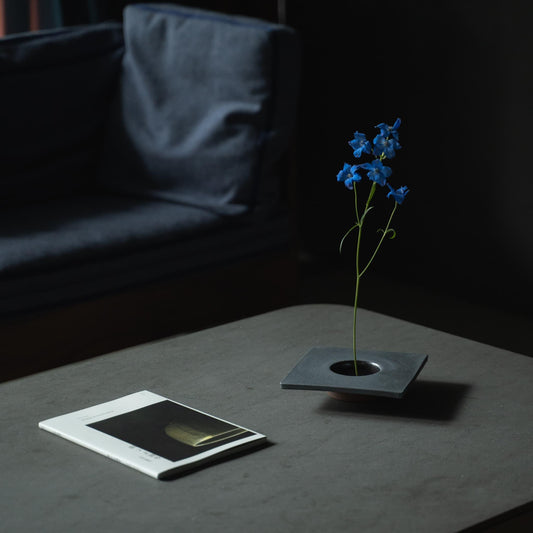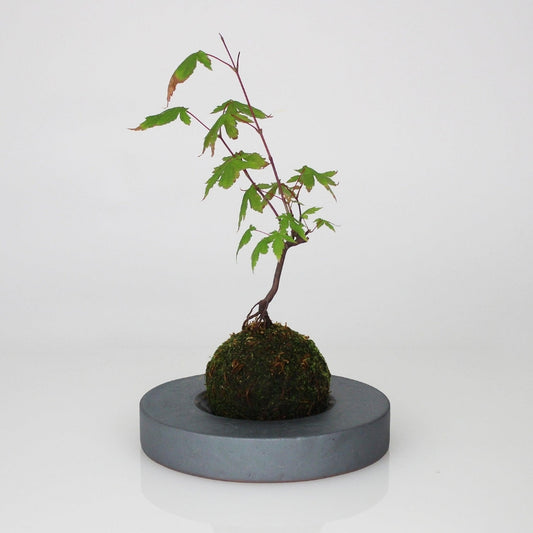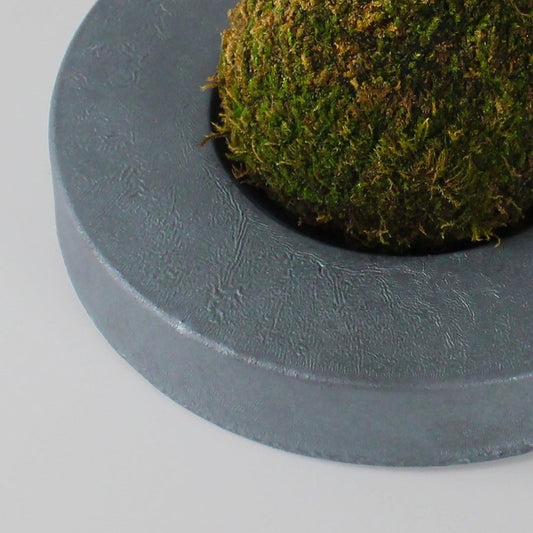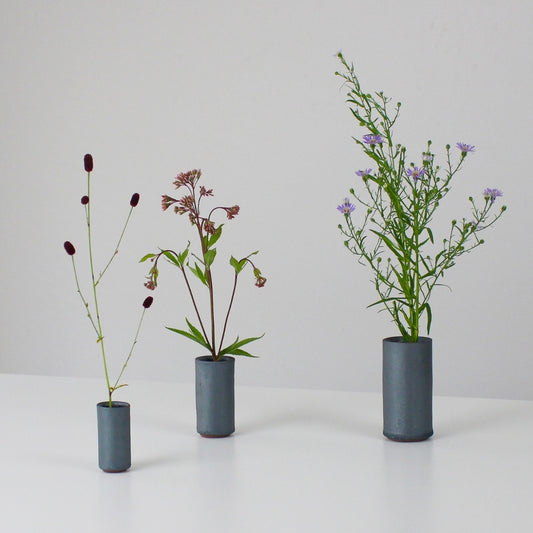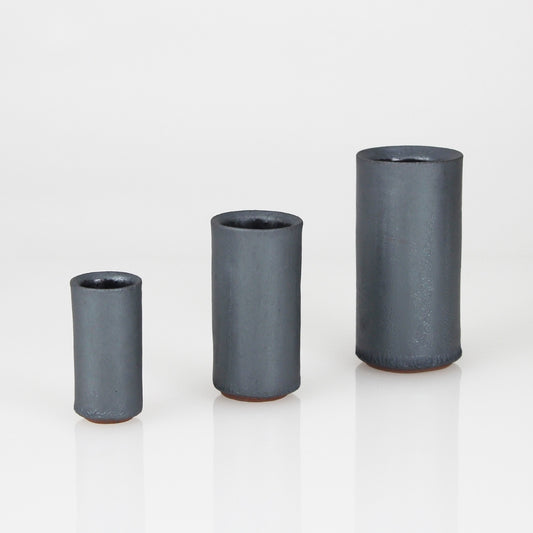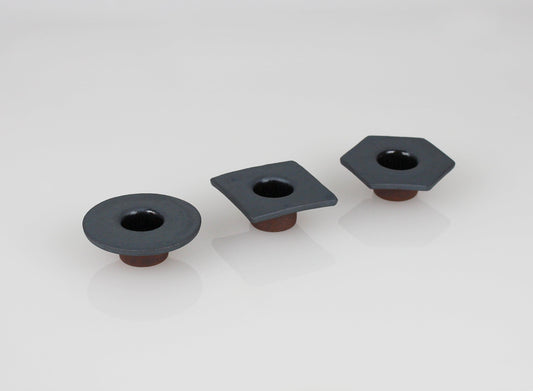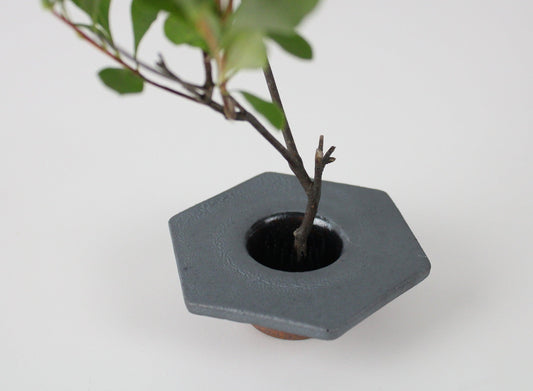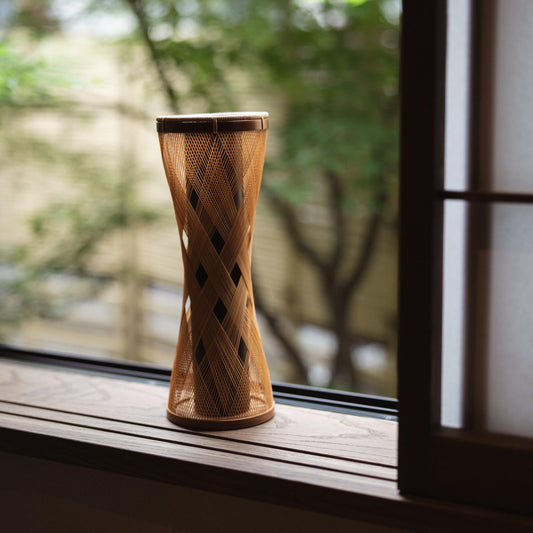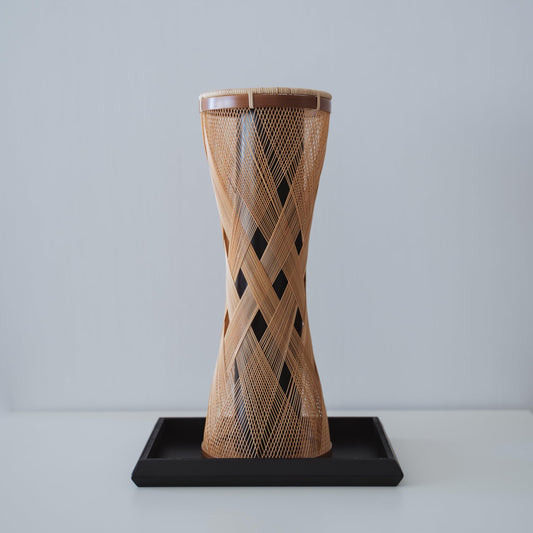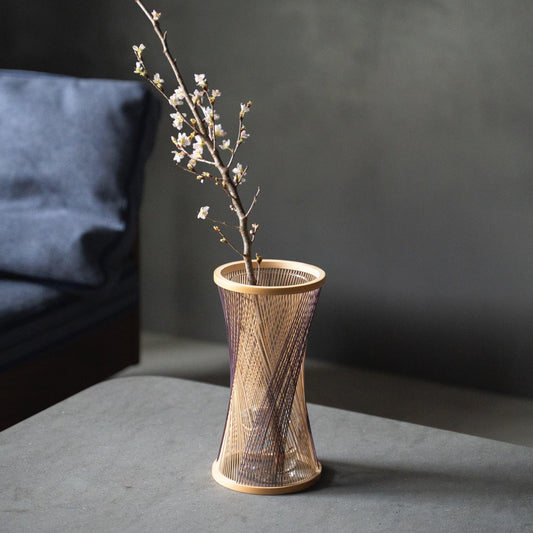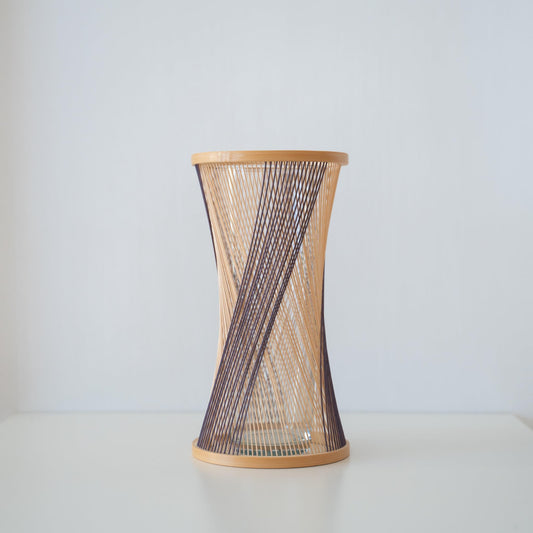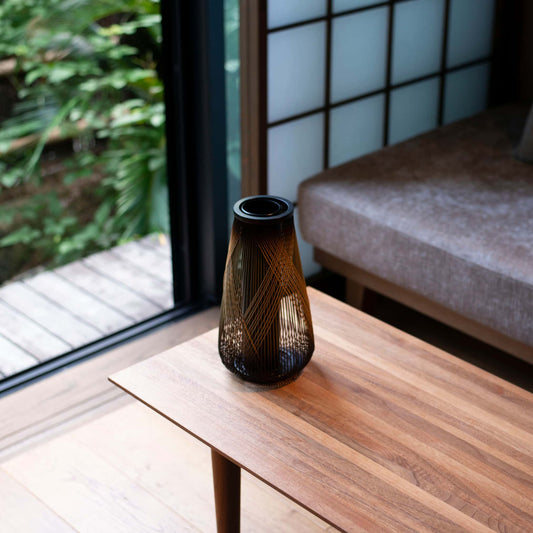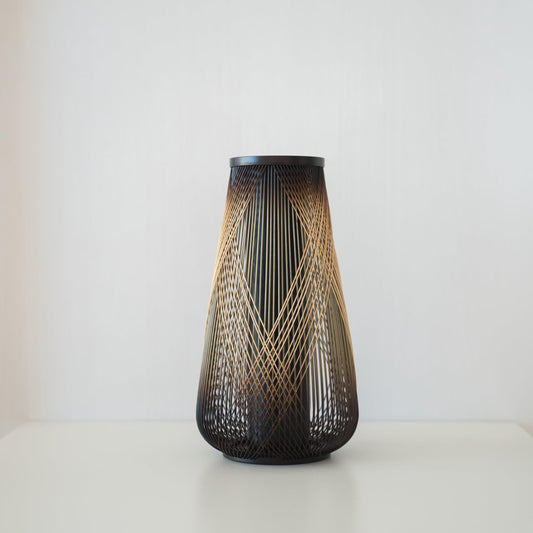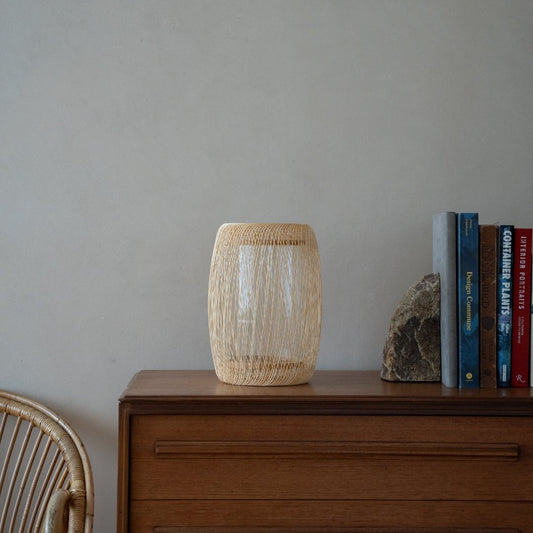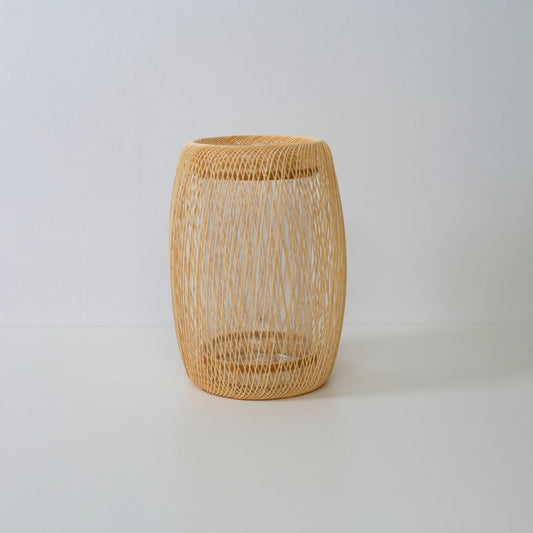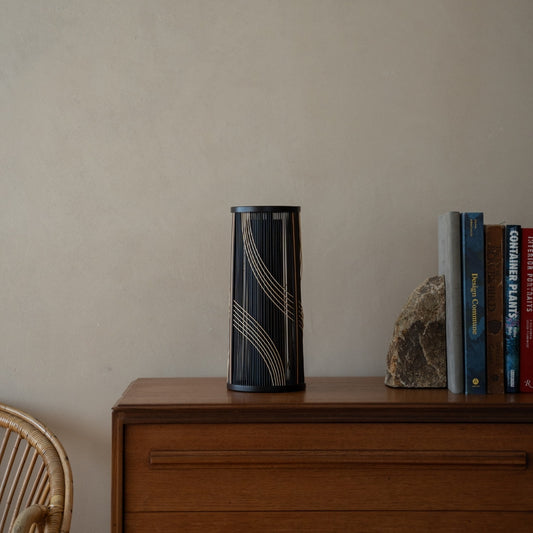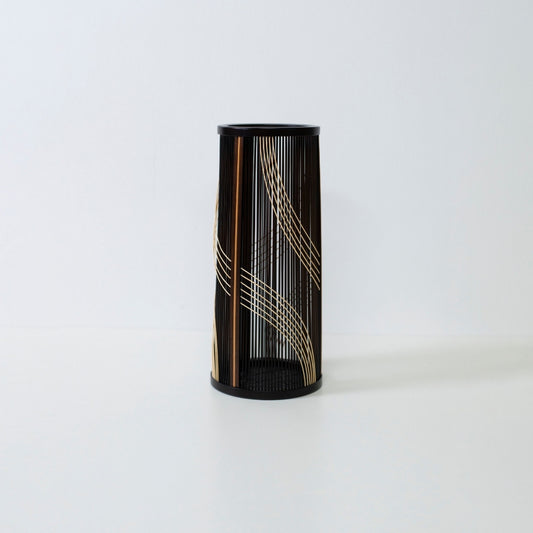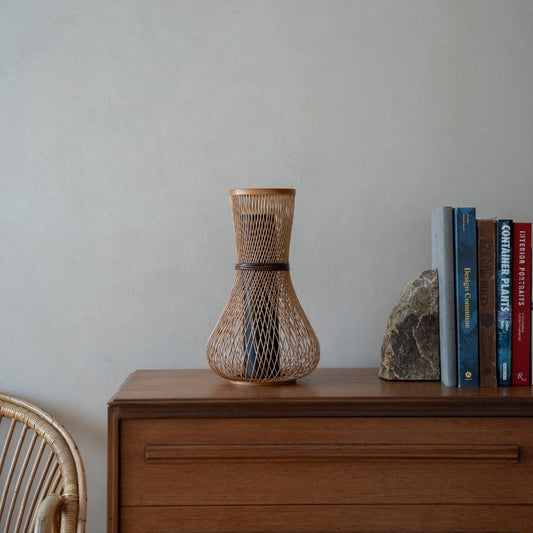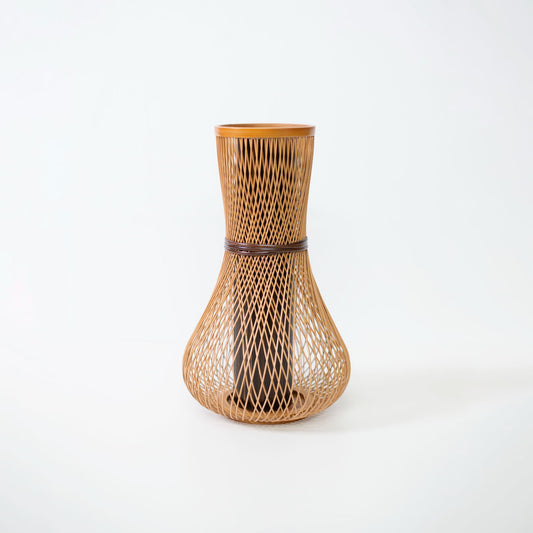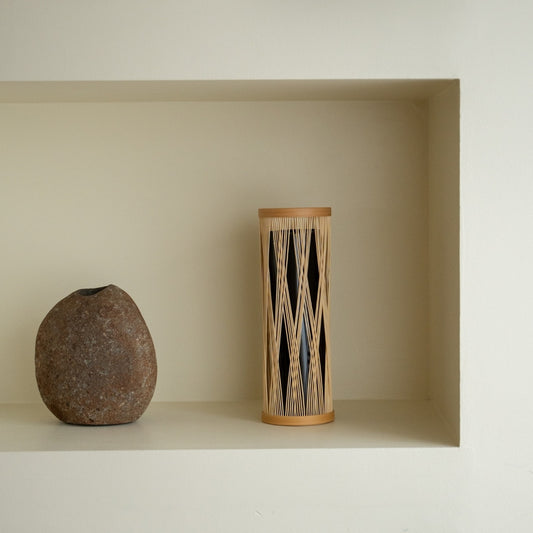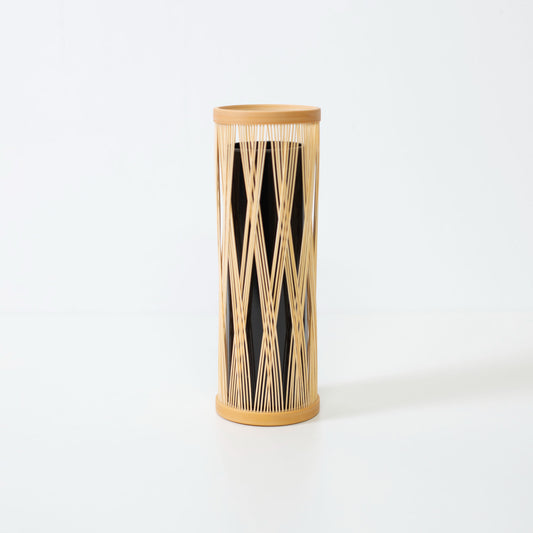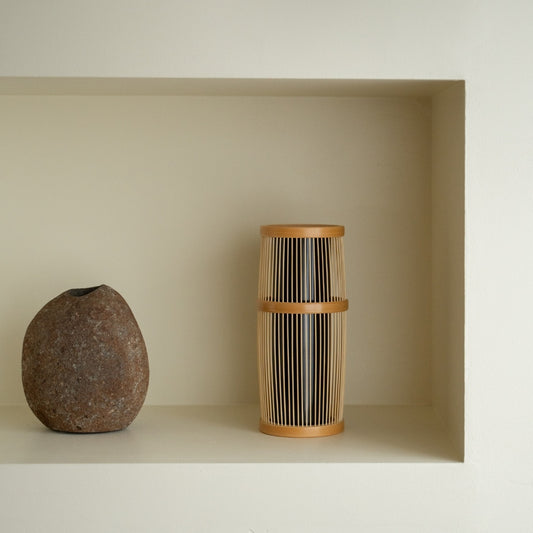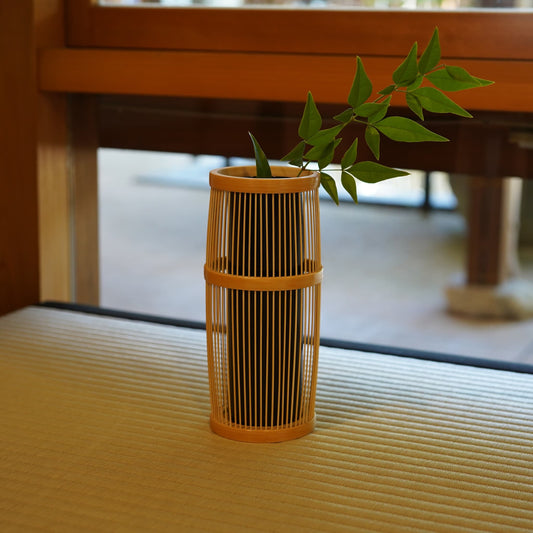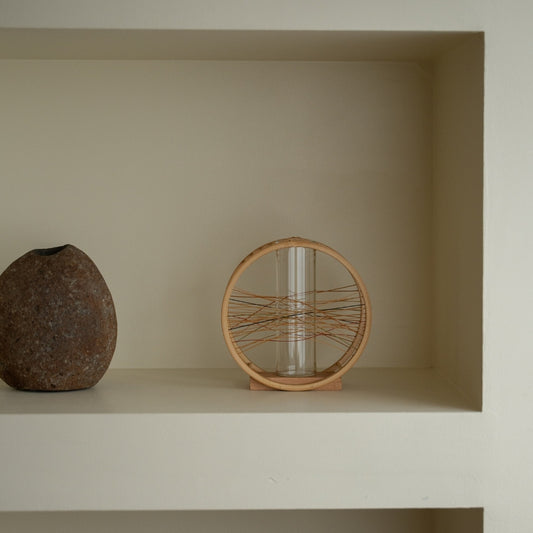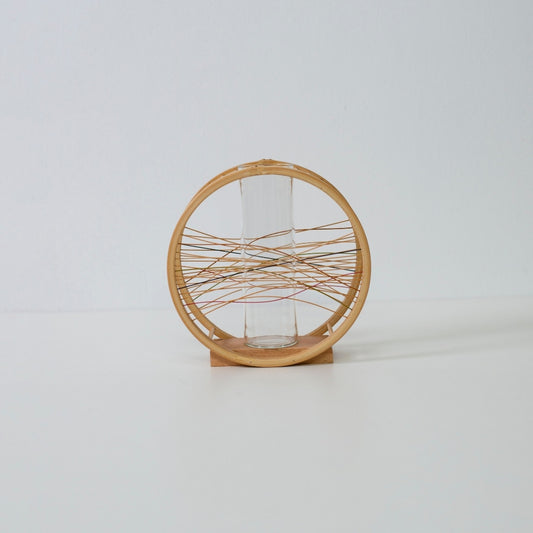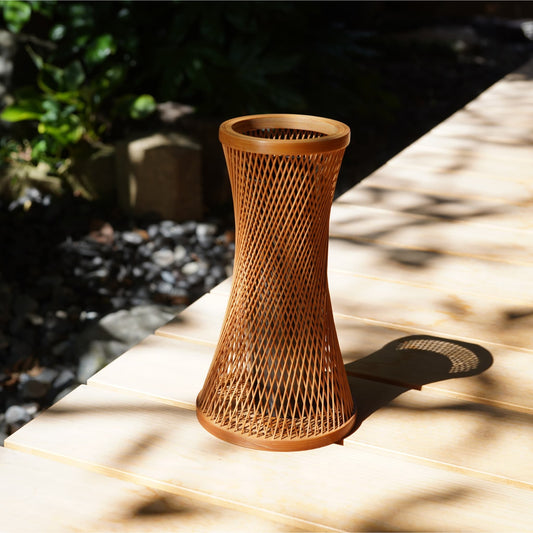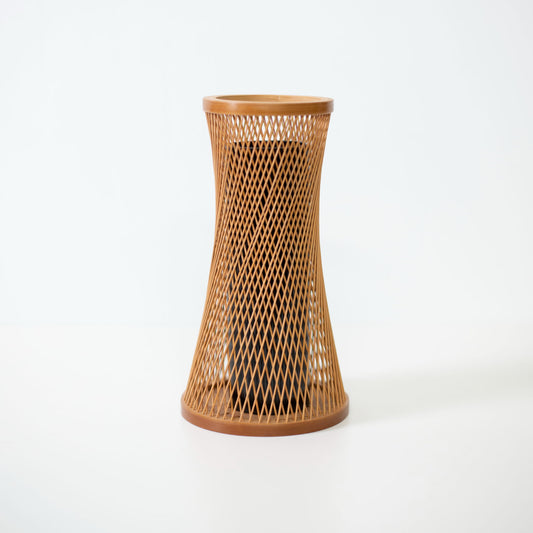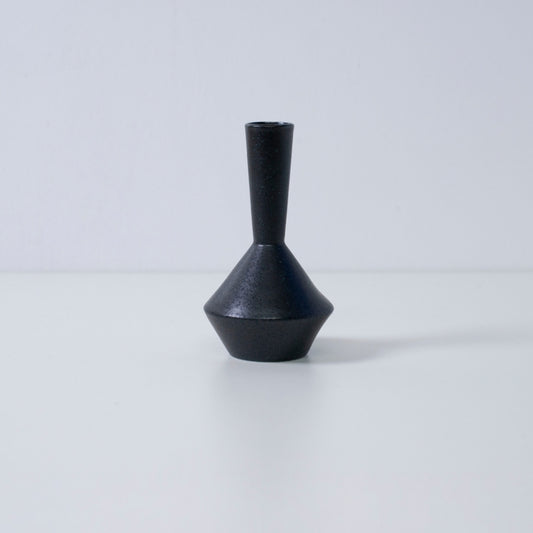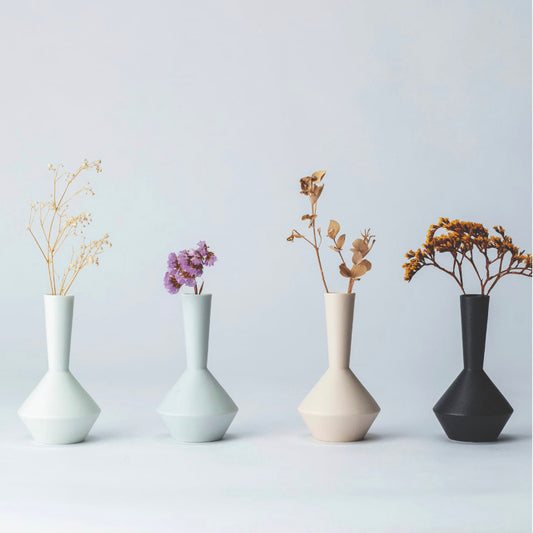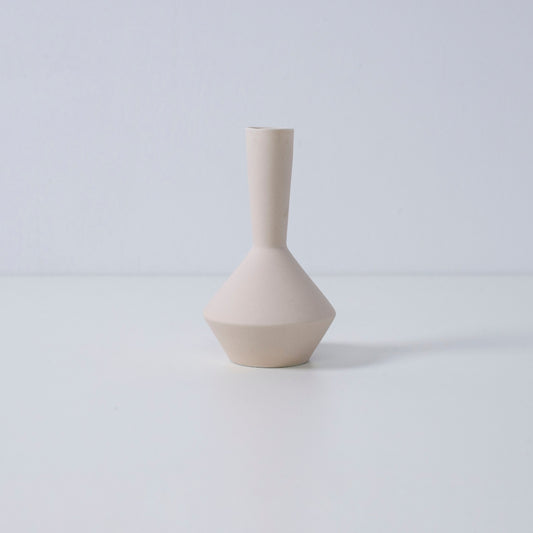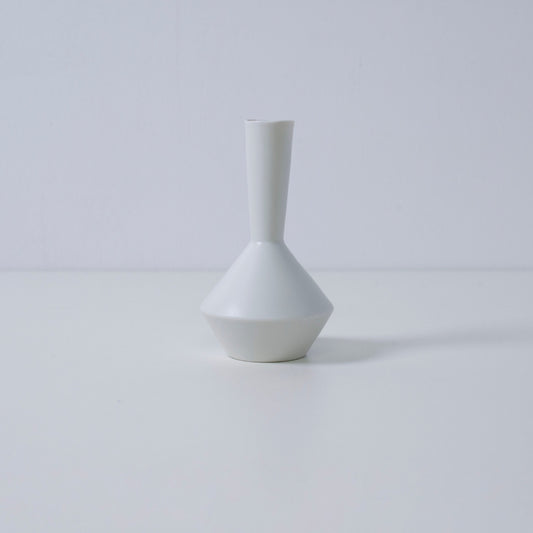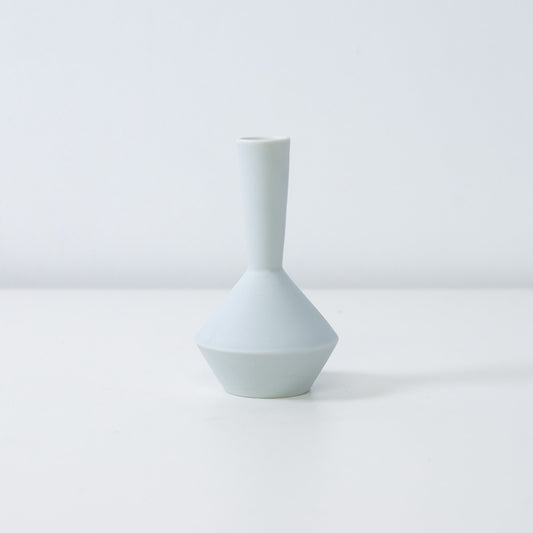Collection: Ikebana Vase, Kenzan & Japanese Flower Vase
-
Japanese Cedar Ikebana Vase Indigo
Regular price $230.00 CADRegular price$240.00 CADSale price $230.00 CADSale -
Japanese Cedar Ikebana Vase Natural Wood
Regular price $180.00 CADRegular price$190.00 CADSale price $180.00 CADSale -
Japanese Cedar Ikebana Vase Indigo 02
Regular price $240.00 CADRegular price -
Japanese Cedar Ikebana Vase Natural Wood 02
Regular price $190.00 CADRegular price -
Japanese Aji Stone Flower Vase
Regular price $230.00 CADRegular price -
Japanese Pinless Kenzan Flower Frog "the ginkgo" for Ikebana
Regular price $220.00 CADRegular price -
Japanese Pinless Kenzan Flower Frog "the air" for Ikebana
Regular price $190.00 CADRegular price -
Japanese Pinless Kenzan Flower Frog "the earth" for Ikebana
Regular price $190.00 CADRegular price -
Japanese Pinless Kenzan Flower Frog "the water" for Ikebana
Regular price $190.00 CADRegular price -
Japanese Pinless Kenzan Flower Frog "Petal" for Ikebana
Regular price From $180.00 CADRegular price -
Japanese Pinless Kenzan Flower Frog "Voronoi" for Ikebana
Regular price From $180.00 CADRegular price -
Japanese Pinless Kenzan Flower Frog "Hana" for Ikebana
Regular price From $180.00 CADRegular price -
Japanese Pinless Kenzan Flower Frog "Garden" for Ikebana
Regular price From $180.00 CADRegular price -
Japanese Pinless Kenzan Flower Frog "Heart" for Ikebana
Regular price $190.00 CADRegular price -
Japanese Ikebana Vase with Pinless Kenzan Flower Frog "Flower garden"
Regular price $450.00 CADRegular price -
Japanese Ikebana Vase "Bush of copper"
Regular price $280.00 CADRegular price -
Japanese Ikebana Vase "Bush of copper"
Regular price $220.00 CADRegular price -
Japanese Pinless Kenzan Flower Frog & Plate Gift Set L
Regular price $300.00 CADRegular price -
Japanese Pinless Kenzan Flower Frog & Plate Gift Set S
Regular price $240.00 CADRegular price -
Japanese Tile Flower Vase sasae M
Regular price $380.00 CADRegular price -
Japanese Ikebana Vase "Kenzan - rei"
Regular price $150.00 CADRegular price -
Japanese Kokedama Stand "Kokedama - kubo"
Regular price $150.00 CADRegular price -
Japanese Ikebana Vase "Kenzan - shin"
Regular price From $110.00 CADRegular price -
Japanese Ikebana Vase "Kenzan - aya 3set"
Regular price $180.00 CADRegular price -
Japanese Bamboo Flower Vase “Rising Clouds”
Regular price $470.00 CADRegular price -
Japanese Bamboo Flower Vase "Fleeting Moment"
Regular price $380.00 CADRegular price -
Japanese Bamboo Flower Vase “Rising Dragon”
Regular price $380.00 CADRegular price -
Japanese Bamboo Flower Vase "Cocoon"
Regular price $380.00 CADRegular price -
Japanese Bamboo Flower Vase “Flowing Water”
Regular price $380.00 CADRegular price -
Japanese Bamboo Flower Vase “Fukuju”
Regular price $310.00 CADRegular price -
Japanese Bamboo Flower Vase “Entwined Branch”
Regular price $180.00 CADRegular price -
Japanese Bamboo Flower Vase “Shiori”
Regular price $160.00 CADRegular price -
Japanese Bamboo Flower Vase “Flowing Wind”
Regular price $180.00 CADRegular price -
Japanese Bamboo Flower Vase “Kanon”
Regular price $180.00 CADRegular price -
Japanese Bamboo Flower Vase “Kisaragi”
Regular price $340.00 CADRegular price -
Japanese Single Flower Vase - Black
Regular price $110.00 CADRegular price -
Japanese Single Flower Vase - Pink
Regular price $110.00 CADRegular price -
Japanese Single Flower Vase - White
Regular price $110.00 CADRegular price -
Japanese Single Flower Vase - Pale Blue
Regular price $110.00 CADRegular price
Recently Viewed Products
More to Explore
-
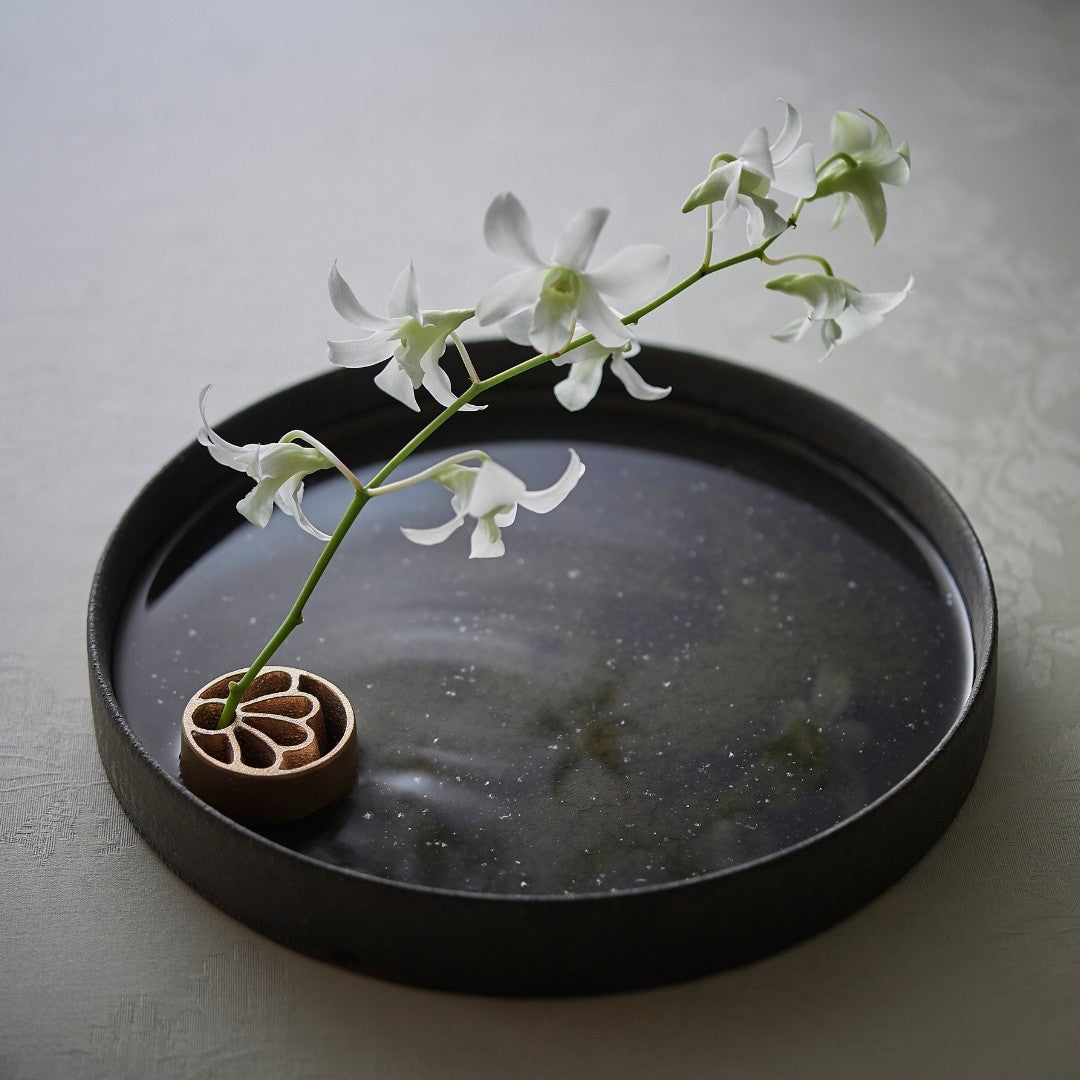
Kenzan Japanese Flower Frog
Kenzan: The Japanese Flower Frog for Ikebana Artistry Discover the Kenzan, the...
-
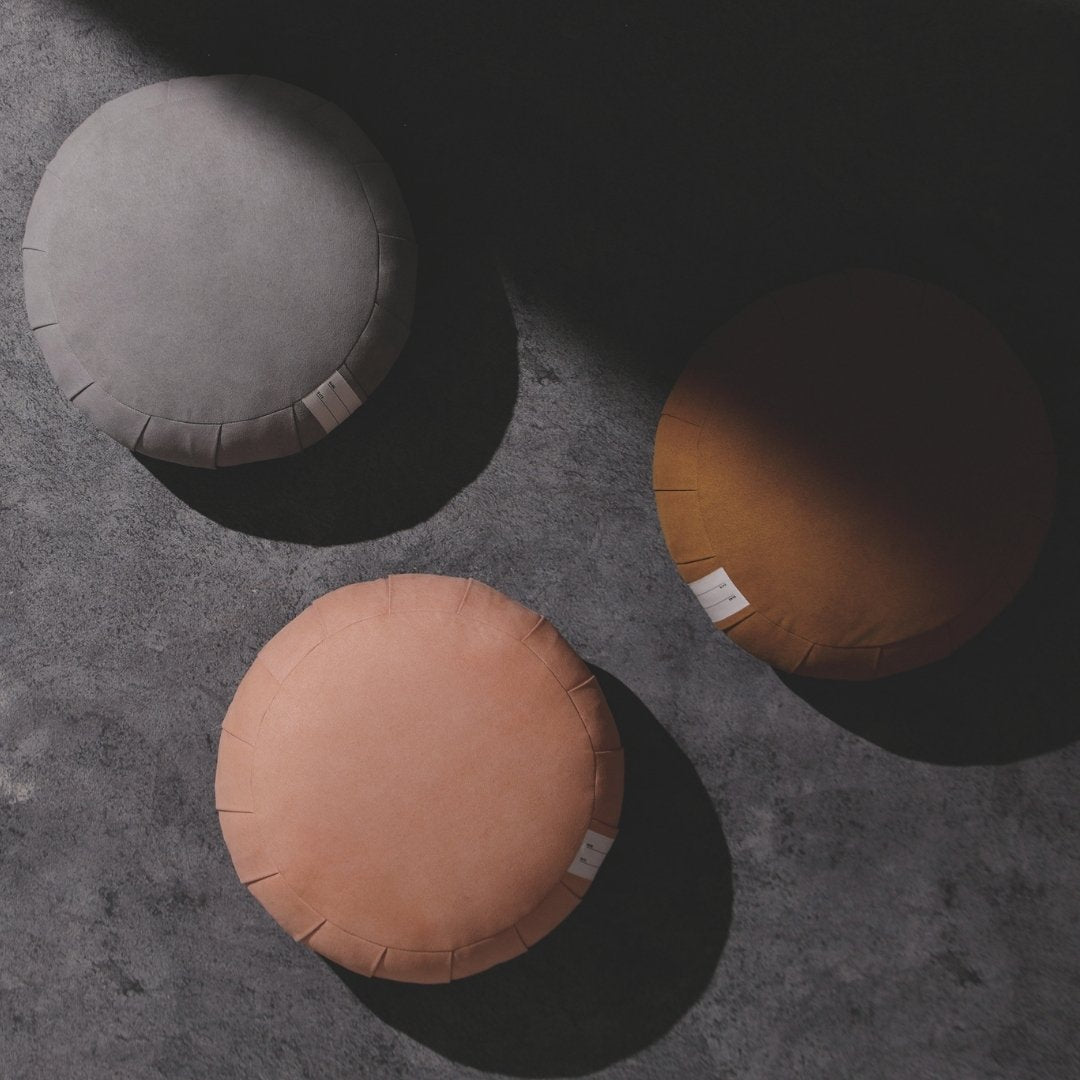
Zafu Meditation Cushion
Zafu Meditation Cushion: Find Your Foundation for Zazen and Mindfulness In a...
-
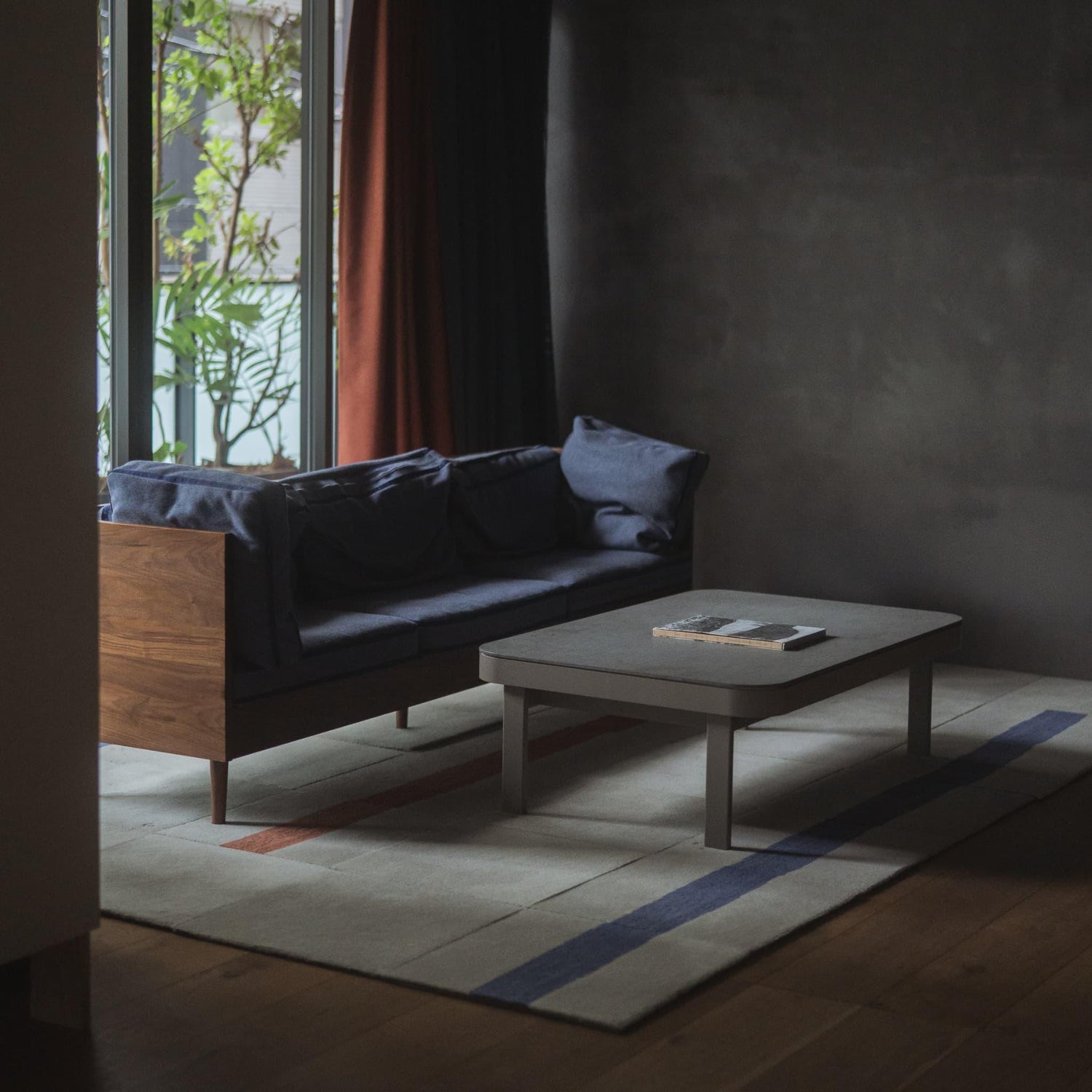
Japanese Home Decors
Japanese Home Decors At Millennium Gallery Japan, we introduce new authentic Japanese...
Ikebana Vases: The Art of Japanese Flower Arrangement
In the heart of Japanese aesthetics lies a deep reverence for nature, a quiet appreciation for the changing seasons, and the art of bringing that transient beauty into our daily lives. There is no purer expression of this philosophy than Ikebana, the traditional Japanese art of flower arranging. More than just placing flowers in a container, Ikebana is a disciplined art form, a meditative practice also known as Kado, or "the way of flowers."
At the center of every ikebana flower arrangement is the vessel that gives it form and life: the ikebana vase. A Japanese vase is not a mere container; it is an integral part of the composition, a stage upon which the drama of nature unfolds. It is chosen to complement and elevate the lines, colors, and textures of the flowers and branches, creating a harmonious whole that resonates with tranquility and elegance. The right vase can transform a simple branch into a profound statement and a single bloom into a focal point of serene beauty.
Millennium Gallery Japan is proud to offer an exquisite collection of authentic ikebana vases, where centuries of craftsmanship meet contemporary design. From minimalist vessels perfect for a modern Japandi vase aesthetic to traditional ceramic and bamboo pieces that echo the spirit of wabi-sabi, each vase in our collection is a work of art, handcrafted by skilled artisans in Japan. Discover the perfect vessel to begin your journey into the art of Ikebana and bring a sense of harmony, nature, and timeless beauty into your home.
What is an Ikebana Vase?
An ikebana vase, known in Japan as hanaire or kaki, is a vessel specifically designed to be part of an artistic floral composition. Unlike Western vases, which are often used for dense bouquets where the vessel itself plays a secondary role, Japanese vases for Ikebana are more active and play a role no less important than the flowers themselves. Its purpose is to create a relationship with the plant materials, to define the space they inhabit, and to establish the overall mood and character of the arrangement.
The Philosophy of Subtraction and Space (Ma 間)
A key distinction between Ikebana and Western floristry lies in the concept of "the aesthetics of subtraction". While Western arrangements often celebrate abundance—a "more is more" approach that fills space with color and blooms—Ikebana is an art of refinement and minimalism. It is the "aesthetics of subtraction." The goal is not to fill the vase, but to use the fewest elements necessary to capture the essence and vitality of nature.
This philosophy places immense importance on negative space, or Ma. The empty space surrounding the flowers and branches is just as significant as the elements themselves. It creates balance, rhythm, and a sense of peaceful contemplation. An ikebana vase is designed with this in mind. Its form, whether a tall, slender cylinder or a low, expansive basin, is intended to frame and accentuate this vital empty space, allowing each stem, leaf, and flower to be appreciated in its own right.
A Brief History: From Buddhist Offerings to Modern Art
The history of the Japanese vase is deeply intertwined with the cultural and spiritual development of Japan. Its origins can be traced to the 6th century with the introduction of Buddhism from China. The practice of offering flowers to Buddha (kuge) was the earliest form of flower arrangement, and vessels were needed for these offerings.
During the Muromachi period (15th century), as the tokonoma, an architectural alcove for displaying art, became a feature of homes, Ikebana began to evolve as a secular art form. The monks of the Rokkaku-dō temple in Kyoto, most notably Ikenobo Senkei, are credited with establishing the first school of Ikebana. During this time, the art was refined, and the rules of composition were established.
The art flourished alongside the tea ceremony (chanoyu), where a simple, understated floral arrangement, or chabana, became an essential element in the tea room. This called for simple, natural vases—often made of unglazed ceramic, bamboo, or bronze—that embodied the spirit of wabi-sabi. Over the centuries, countless schools and styles of Ikebana have emerged, each contributing to the rich diversity of vase designs we see today, from magnificent classical vessels to sleek, modern interpretations perfect for a Japandi vase collection.
Kado, Ikebana, and the Vase
To truly appreciate the ikebana vase, it is essential to understand its place within the broader context of Kado, "the way of flowers." Like Judo or Shodo (calligraphy), the suffix "-do" implies a lifelong path of learning, discipline, and self-discovery. Kado is not merely about arranging flowers beautifully; it is a practice for cultivating patience, mindfulness, and a deeper connection with nature.
The Trinity of Arrangement: Heaven, Earth, and Humanity
A foundational principle in many Ikebana schools is the creation of an asymmetrical triangle using three main stems, which symbolize the harmony between heaven, earth, and humanity.
- Shin: The tallest stem, representing heaven or the divine.
- Soe: The medium-length stem, representing humanity.
- Hikae: The shortest stem, representing the earth.
These elements are carefully placed to create a dynamic, balanced, and three-dimensional composition. The vase is the foundation from which this cosmic representation emerges, grounding the entire structure.
The Role of the Vase in Different Ikebana Styles
The choice of vase is critical and is often dictated by the style of Ikebana being practiced.
- Rikka: The oldest and most formal style, Rikka arrangements are large, complex, and symbolic, often using nine or more elements to depict an idealized natural landscape. These grand compositions traditionally call for equally magnificent vases, often tall, ornate vessels made of bronze or fine Chinese ceramics.
- Nageire: Meaning "thrown in," Nageire is a more spontaneous and naturalistic style that emphasizes the graceful lines of the plant material. It is typically arranged in tall, cylindrical vases (zundo) or flask-shaped jars (tsubo) where the stems can lean naturally against the vessel's mouth for support. The vase and flowers appear to exist in effortless harmony.
- Moribana: Meaning "piled-up flowers," Moribana is a more modern style developed in the late 19th century to accommodate the introduction of Western flowers. Moribana arrangements are created in low, wide-mouthed vases or basins called suiban. Because there is no narrow mouth for support, this style absolutely requires the use of a Kenzan, also known as a flower frog, to hold the stems firmly in place. This allows the artist to create sprawling, three-dimensional scenes that resemble a miniature landscape.
Where to Use an Ikebana Vase
The elegance of a Japanese vase and an ikebana flower arrangement can enhance any environment, bringing a touch of nature and artistry indoors.
- Create a Focal Point in Your Living Space: Place a vase in an entryway to welcome guests, on a living room coffee table as a centerpiece, on a mantelpiece, or in a quiet corner to create a meditative space.
- Bring Tranquility to the Workspace: A small, simple arrangement on a desk can provide a moment of calm and visual respite during a busy day, helping to reduce stress and improve focus.
- Elevate Dining and Special Occasions: A beautiful ikebana flower arrangement can transform a simple meal into a special event. It adds a touch of elegance and seasonality to any gathering.
Enjoy as a Standalone Art Object: Many ikebana vases are so beautifully crafted that they can be displayed as sculptural art pieces even without flowers, adding texture, form, and character to a shelf or console table.
How to Use an Ikebana Vase
While Kado is a lifelong study, anyone can create a beautiful arrangement by following a few simple principles.
A Beginner's Guide to Ikebana Principles
- Start Simple: You don't need a lot of flowers. Begin with the "one flower, one leaf" principle. Choose one stunning bloom and one interesting branch or leaf. Focus on their individual beauty and the relationship between them.
- Consider Height and Proportion: A general guideline is to have the tallest element (the Shin) be about 1.5 to 2 times the height of the vase.
- Create Asymmetry: Avoid cutting all stems to the same length or placing them symmetrically. Varying the heights and angles creates a more dynamic and natural-looking composition.
- Embrace the Void: Remember the importance of negative space (Ma). Don't feel the need to fill every gap. Let the arrangement breathe. This "less is more" approach is the heart of Ikebana.
Choosing the Right Vase for Your Flowers and Space
By Material:
- Ceramic: Versatile and classic, suitable for any room.
- Glass: Creates a light, airy, and modern feel. Excellent for summer arrangements and allowing the stems to be part of the visual composition.
- Bamboo & Wood: Perfect for creating a warm, natural, and distinctly Japanese atmosphere.
- Metal: Adds a sense of luxury and sophistication, ideal for more formal settings.
By Shape:
- Tsubo - Jar/Urn: A versatile shape with a rounded body and a narrower mouth. Excellent for both beginners and experts, as it provides natural support for stems.
- Zundo - Cylinder: A tall, straight-sided vase, best for showcasing the beautiful vertical lines of flowers like lilies or irises.
- Suiban - Low Basin: A shallow, wide container essential for the Moribana style. Requires a Kenzan (flower frog) to hold the stems.
Essential Tools: The Kenzan and Hasami
For arrangements in low suiban vases, a Kenzan is indispensable. This heavy, pin-covered holder, also known as a flower frog, sits at the bottom of the vase and securely grips the stems at any angle. You will also want a pair of dedicated Ikebana scissors (hasami), which are designed to make clean cuts without crushing the plant's water-absorbing vessels.
Care and Maintenance
To ensure your Japanese vase lasts a lifetime, proper care is essential.
- Ceramics: Wash by hand with lukewarm water and avoid sudden temperature changes that could cause cracking.
- Wood and Bamboo: Keep out of direct sunlight to prevent fading and cracking. Clean gently with a soft, dry cloth.
- General Care: Change the water daily to prolong the life of your flowers and keep the inside of the vase clean.
A Japanese vase is an invitation to slow down, to observe closely, and to create beauty with your own hands. It is a bridge connecting your home to the natural world. Explore the curated collection at Millennium Gallery Japan and find the perfect ikebana vase to begin your own "way of flowers."
Care and Maintenance Tips of Japanese Flower Vase
To preserve the beauty of your floral vessel, careful maintenance is essential. For ceramic vases, avoid rapid temperature changes and wash by hand in lukewarm water. Wooden vases should be stored away from direct sunlight, while each material may require its own specific care routine to ensure long-lasting beauty.
Choosing and Coordinating Your Floral Vessel
Selecting the right vase is crucial for enhancing both the beauty of the flowers and the harmony of your space. Begin by choosing a shape that complements the style and type of flower you intend to display. For instance, a straightforward, simple design is versatile enough to match any bloom, while a vase with graceful curves may better accentuate the unique character of specific flowers.
Material selection is also key: glass vases convey transparency and modern elegance, while ceramic or metal vases exude warmth and solidity. Consider the texture and light reflection of each material to determine the best match for your flowers.
Size is another important factor; the height and proportions of the vase should harmonize with both the flowers and the designated space, whether it’s a living room, office, or dining area. Additionally, ease of maintenance is a practical consideration—vases with intricate decorations may require more care, so opting for a design that balances functionality and beauty can ensure that your vase remains a stunning centerpiece with minimal fuss.
Japanese floral vessels—where traditional beauty meets modern elegance—enhance the natural allure of fresh flowers while bringing rich color and moments of calm to your living space. By incorporating these exquisite vases into your daily life, you invite a touch of nature into your environment, creating a quiet haven in the midst of a busy world. Experience the charm of Japanese floral vessels and savor the blissful moments spent with fresh blooms.

